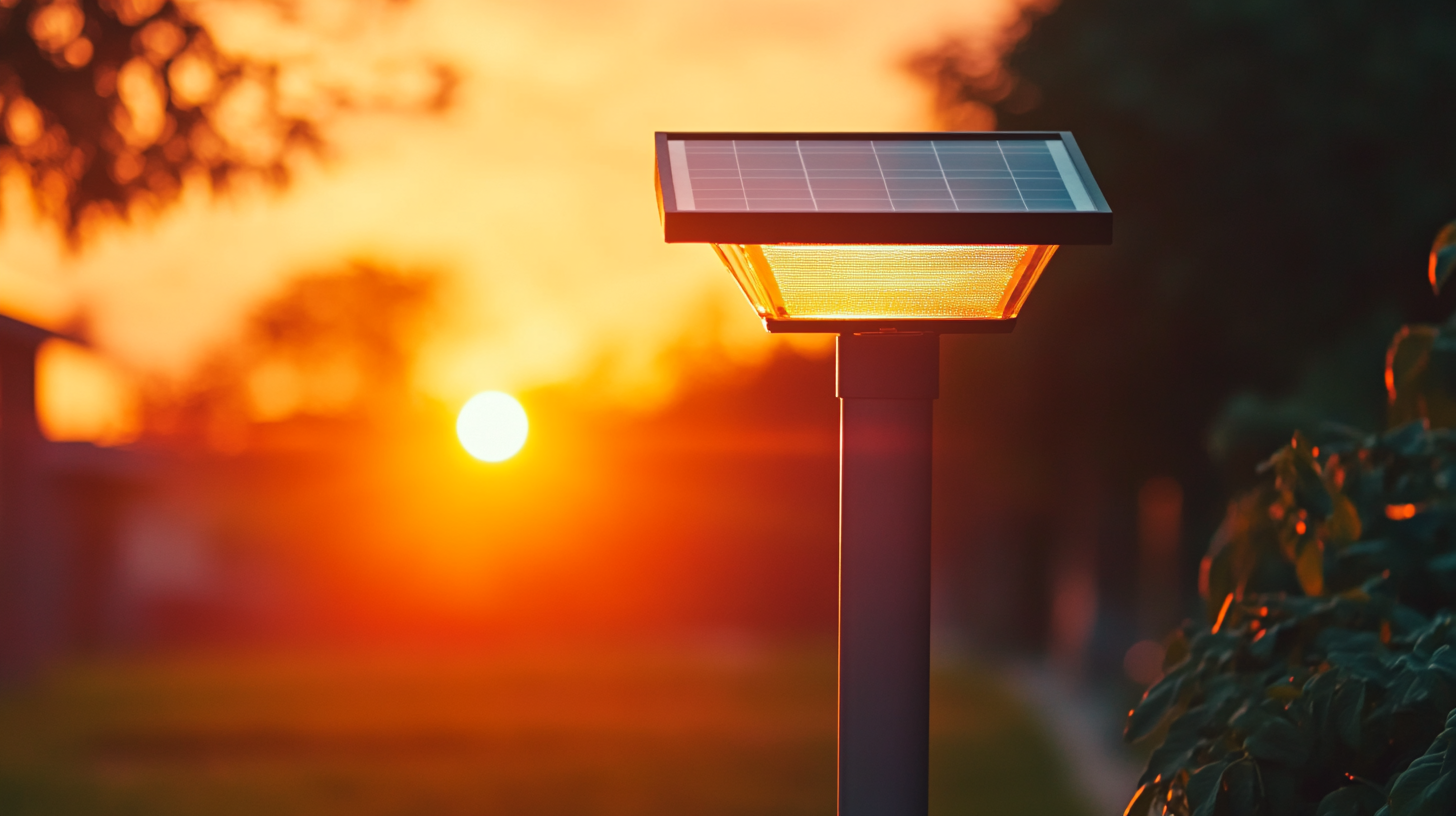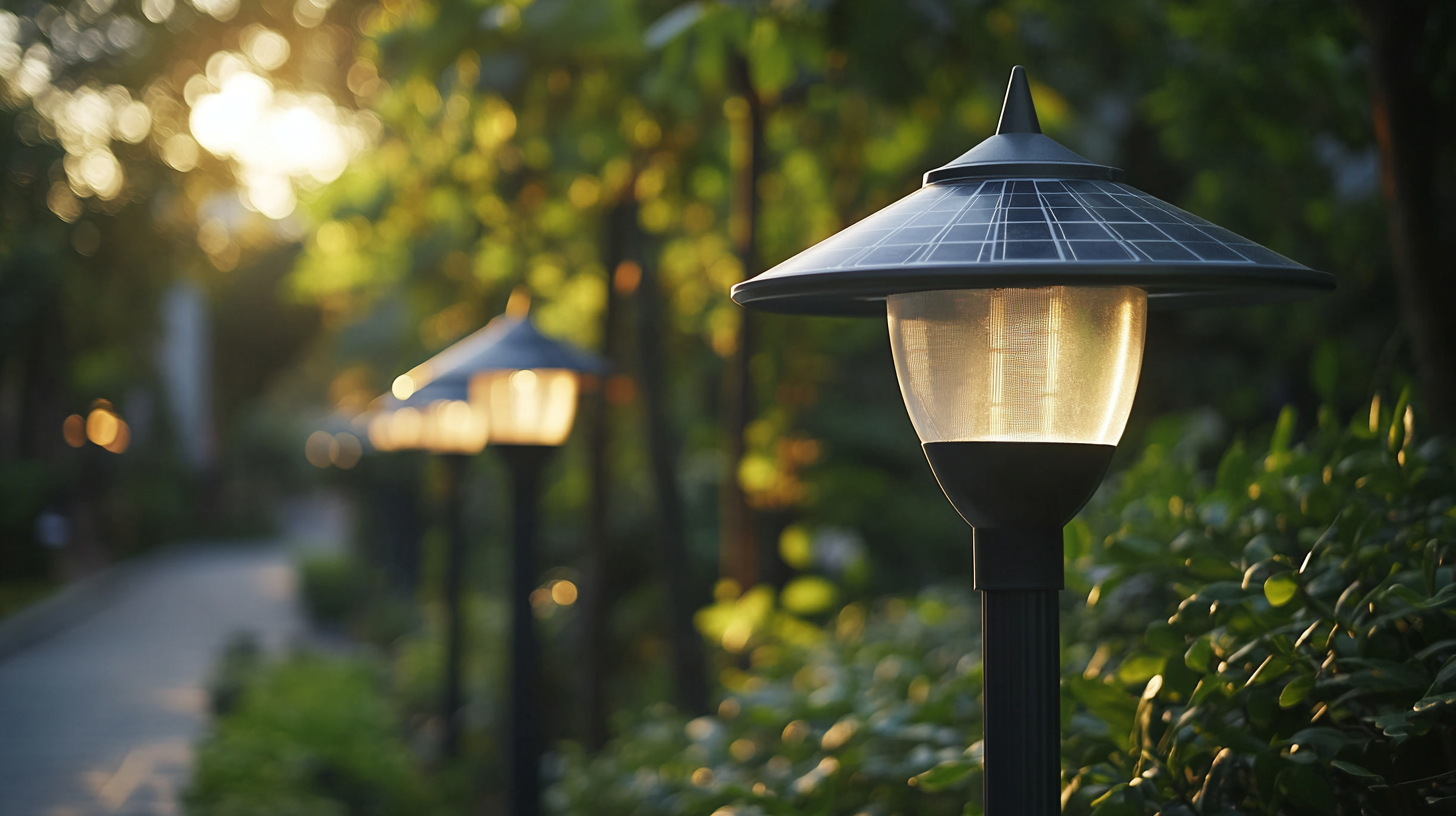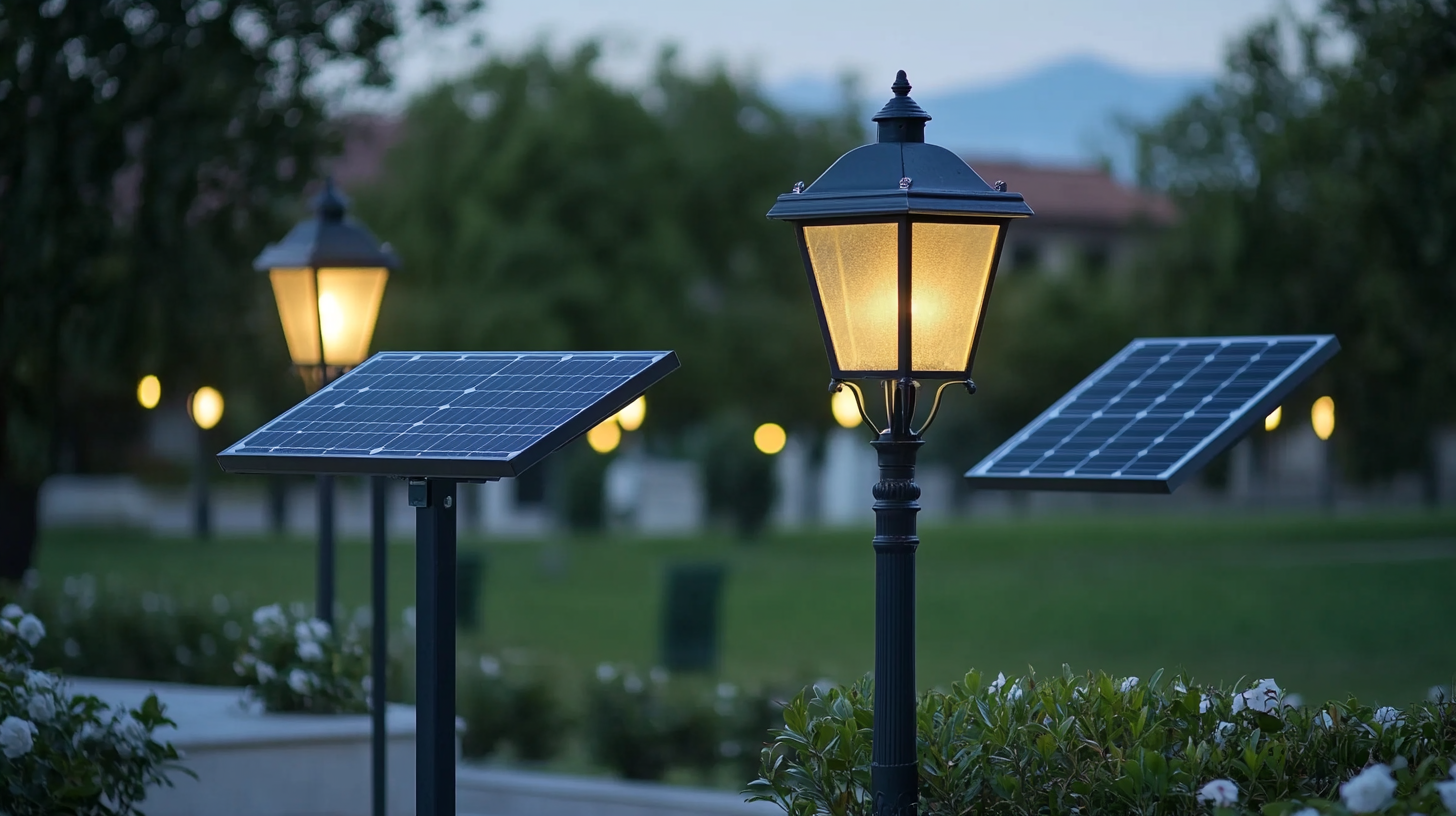Exploring the Rise of Outdoor Solar Lamps and Their Impact on Energy Savings
As the world increasingly shifts towards sustainable energy solutions, the rise of outdoor lamps solar has emerged as a key player in the quest for efficiency and eco-friendliness. According to a report by the International Energy Agency (IEA), the global lighting market represents a significant portion of energy consumption, accounting for approximately 15% of total electricity use. In response to this, solar-powered outdoor lighting systems have gained considerable traction, projected to experience a compound annual growth rate (CAGR) of over 20% from 2021 to 2026. These innovative outdoor solutions not only reduce reliance on traditional power sources but also offer substantial cost savings for consumers and municipalities alike. By harnessing the sun's energy, outdoor lamps solar are not only lighting up streets and gardens but also paving the way toward a greener future, illustrating the balance between aesthetics, functionality, and environmental responsibility.

The Growing Popularity of Outdoor Solar Lamps in Sustainable Living
The growing popularity of outdoor solar lamps has become a pivotal aspect of sustainable living, driven by increasing consumer awareness and the pressing need for eco-friendly solutions. According to a report from the International Renewable Energy Agency (IRENA), global installed capacity of solar energy has surged by nearly 20% annually over the past few years, leading to a robust market for solar-powered products. Outdoor solar lamps, which harness this renewable energy source, not only reduce electricity costs but also contribute to a significant decrease in carbon footprints, aligning perfectly with modern sustainability goals.
As urban areas strive to promote green initiatives, the adoption of outdoor solar lamps is on the rise. A study by MarketsandMarkets estimated that the outdoor solar lighting market would reach $4.4 billion by 2025, reflecting a compound annual growth rate of 15.8% from 2020. This surge is largely attributed to the dual benefits of energy efficiency and low maintenance costs. Furthermore, outdoor solar lamps have been found to use up to 85% less energy than traditional lighting methods, making them a preferred choice for environmentally-conscious consumers and municipalities alike.
Exploring the Rise of Outdoor Solar Lamps and Their Impact on Energy Savings
| Feature | Description | Energy Savings (Annual) | Popularity Trend (1-5) |
|---|---|---|---|
| Cost-Effective | Solar lamps harness sunlight, reducing electricity bills. | $100 | 5 |
| Eco-Friendly | Reduces carbon footprint by using renewable energy. | $80 | 4 |
| Easy Installation | No wiring required, making setup quick and hassle-free. | $50 | 4 |
| Safety | No electrical hazards compared to traditional lamps. | $60 | 5 |
How Outdoor Solar Lamps Contribute to Significant Energy Savings
Outdoor solar lamps have emerged as a transformative solution for both residential and commercial lighting, offering a sustainable alternative that significantly contributes to energy savings. By harnessing the power of the sun, these lamps eliminate the need for traditional electrical sources, reducing the demand on the grid and lowering electricity bills. Solar lamps store energy during the day and provide illumination at night, making them an efficient choice for gardens, pathways, and public spaces. This not only leads to lower operational costs but also supports efforts to reduce carbon footprints.
Moreover, the impact of outdoor solar lamps extends beyond financial savings. Their integration encourages communities and urban planners to embrace renewable energy solutions, promoting awareness and responsible energy consumption. With advancements in solar technology, these lamps are now more efficient and longer-lasting than ever before. As cities increasingly seek eco-friendly measures, solar lamps present an ideal solution for enhancing outdoor environments while contributing to sustainable development goals. Embracing this lighting solution not only brightens spaces but also shines a light on the importance of energy efficiency in modern living.
Impact of Outdoor Solar Lamps on Energy Savings
This chart illustrates the distribution of energy savings achieved by utilizing outdoor solar lamps compared to traditional energy consumption and unutilized energy. The significant savings from solar lamps emphasize their role in promoting sustainable energy practices.
Technological Innovations Driving the Efficiency of Solar Lighting
The rapid advancement of solar technology has revolutionized outdoor lighting solutions, leading to an increased adoption of solar lamps worldwide. According to a report by the International Renewable Energy Agency (IRENA), the global solar lighting market is projected to grow at a CAGR of 25% over the next five years. This surge is largely driven by innovations in photovoltaic cells and battery storage technologies, which enhance the efficiency and longevity of solar lamps. Modern solar lamps now boast conversion efficiencies exceeding 20%, significantly improving their performance in diverse weather conditions.
Moreover, smart solar lighting solutions are emerging, integrating IoT technologies that allow users to control and monitor energy usage remotely. A study by MarketsandMarkets indicates that the smart lighting market, which includes solar innovations, is expected to reach a value of $32 billion by 2025. This technological shift not only reduces reliance on grid energy but also lowers operational costs, with energy savings of around 50% compared to traditional lighting. As urban areas increasingly seek sustainable solutions for public and residential spaces, the role of outdoor solar lamps in creating energy-efficient environments continues to grow.
Environmental Benefits of Switching to Solar-Powered Outdoor Lighting
As the world increasingly embraces sustainable practices, solar-powered outdoor lighting emerges as a frontrunner in the quest for energy-efficient solutions. By harnessing sunlight, these innovative lamps not only illuminate outdoor spaces but also significantly reduce electricity consumption. The environmental benefits are profound—solar lights operate without contributing to greenhouse gas emissions, thus playing a vital role in global efforts to decarbonize energy systems. In areas where traditional energy sources are costly or unreliable, solar lighting can provide an accessible and affordable alternative, enhancing quality of life while promoting sustainable development.
Moreover, the integration of solar lights in modern construction projects underscores their role in eco-friendly building practices. By minimizing the reliance on non-renewable energy sources, developers can achieve compliance with green building standards and contribute to a more sustainable urban landscape. Recent advancements, such as low-light solar cells, promise even greater efficiency, expanding the applications of solar energy beyond mere outdoor lighting. As the market for solar street lighting continues to grow, it symbolizes a crucial shift towards renewable solutions that foster both environmental stewardship and economic growth.

Practical Tips for Choosing and Installing Solar Lamps for Your Outdoors
When considering the installation of outdoor solar lamps, it’s essential to choose the right product to maximize energy savings and efficiency. According to a report by the Solar Energy Industries Association (SEIA), the global solar market is expected to grow by 20% annually, underscoring the increasing reliance on solar technology. Opt for solar lamps equipped with high-efficiency LED bulbs, which can reduce energy consumption by up to 80% compared to traditional lighting. Selection of models with solar panels rated for 15% efficiency or higher will ensure they capture adequate sunlight, even on cloudy days.
Installation is just as crucial as selection. Positioning solar lamps in areas that receive direct sunlight for at least 6 to 8 hours a day optimizes performance, as noted in a study by the U.S. Department of Energy. Utilize fixtures that come with motion sensors to further conserve energy, activating only when needed. Proper spacing—generally 8 to 10 feet apart—ensures adequate coverage while minimizing energy waste. By taking these practical steps, homeowners can enjoy a well-lit outdoor space while contributing to significant energy savings and promoting sustainability.
